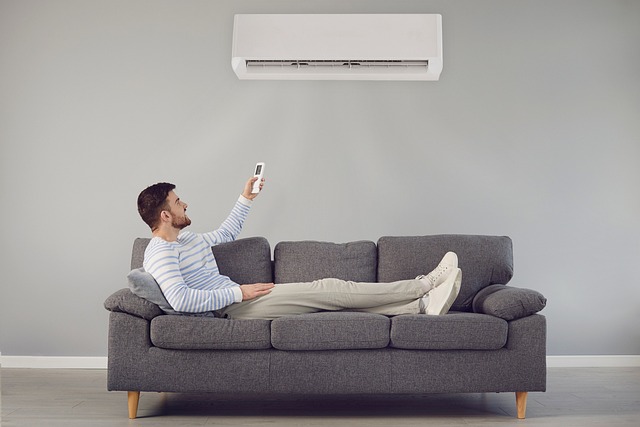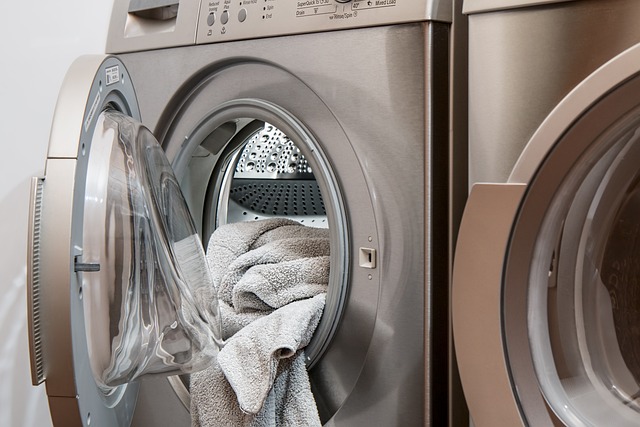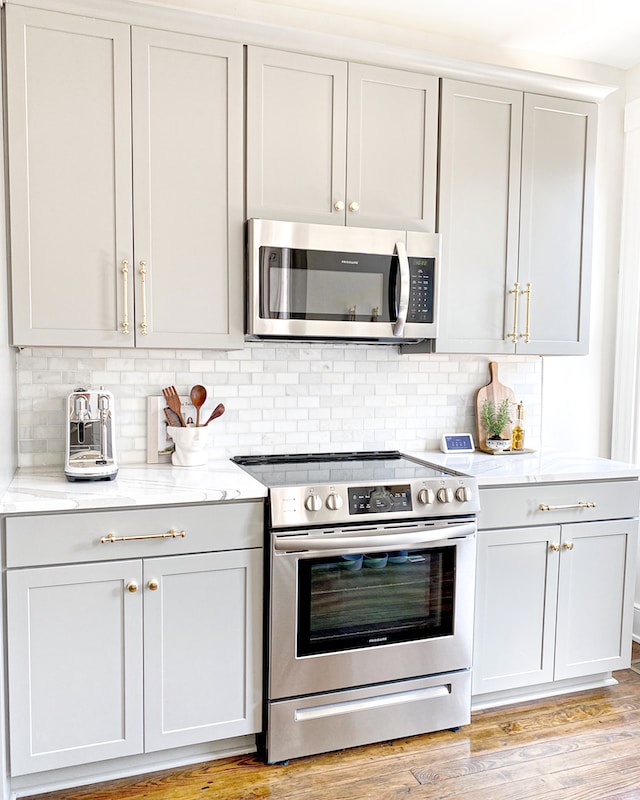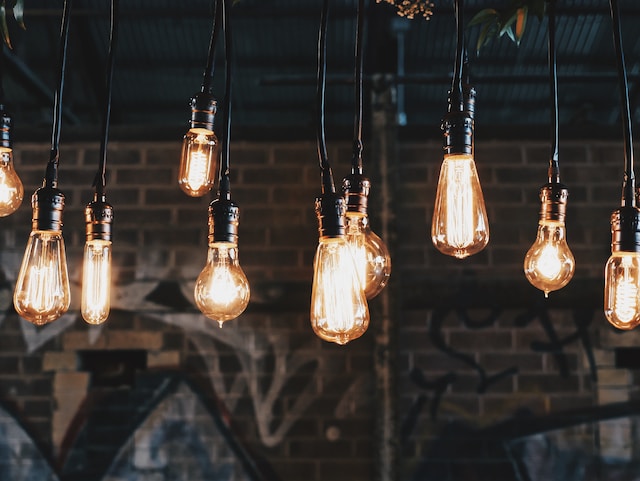
As I sit down in my cozy reading nook, I am reminded of the importance of energy efficiency. As a writer who spends countless hours staring at a computer screen, I am acutely aware of my impact on the environment. That’s why I have made a conscious effort to not only incorporate eco-friendly furniture in my home but also choose energy-efficient appliances and lighting solutions.
Why it matters
Energy efficiency is crucial in today’s world. With natural resources dwindling and the threat of climate change looming large, it is essential that we all do our part to conserve energy.
Energy-efficient options help reduce energy consumption, which in turn lowers energy costs. With energy-efficient appliances and devices, homeowners and businesses can save money on their energy bills. They can also reduce the amount of energy they need to purchase from utility companies, which can also lead to savings.
One must also recognize the positive impact of energy-efficient choices to the environment. For one, they help reduce greenhouse gas emissions, which contribute to climate change. When appliances and devices use less energy, power plants need to produce less electricity, which can help to reduce the amount of fossil fuels burned to generate electricity. This, in turn, leads to less pollution and fewer greenhouse gas emissions.
In addition to environmental benefits, energy-efficient can help to increase the comfort of homes and businesses by minimizing drafts, uneven temperatures, and other problems associated with energy waste. Furthermore, energy-efficient technologies and strategies can help to improve indoor air quality, making for a healthier living and working environment.
Choosing energy-efficient appliances
When it comes to choosing energy-efficient appliances, there are several important factors to consider. These considerations can help you make informed decisions that not only save energy but also reduce your utility bills and contribute to a greener environment.

Energy Star certification: Look for appliances that bear the Energy Star certification label. Energy Star is a trusted symbol that indicates the appliance meets strict energy efficiency standards set by the Environmental Protection Agency (EPA) in the United States and other similar agencies worldwide. Appliances with this certification are designed to consume less energy without sacrificing performance.
Energy consumption ratings: Pay attention to the energy consumption ratings provided by manufacturers. These ratings usually include an energy efficiency ratio (EER) or a seasonal energy efficiency ratio (SEER) for cooling appliances like air conditioners, and a kilowatt-hour (kWh) usage estimate per year for refrigerators, washing machines, dishwashers, and other household appliances. Opt for appliances with lower energy consumption ratings, as they will consume less electricity over time.
Size and capacity considerations: Consider the appropriate size and capacity of the appliance for your needs. Larger appliances tend to consume more energy. If you opt for a refrigerator, for example, choose a size that suits your household’s requirements. Oversized appliances not only waste energy but also occupy unnecessary space.
Features and settings for efficiency: Look for appliances that offer energy-saving features and settings. These can include programmable timers, eco modes, sleep modes, or sensors that automatically adjust energy usage based on usage patterns or environmental conditions. These features can significantly reduce energy consumption without sacrificing convenience or performance.
Comparing energy-efficient options
Once you have identified the key factors to consider, it’s important to compare different energy-efficient options available in the market. Take the following steps to make an informed decision:
1. Research and compare: Conduct thorough research to identify brands and models that prioritize energy efficiency. Read product specifications, user reviews, and expert recommendations to understand how different appliances perform in terms of energy consumption and overall efficiency.
2. Compare energy labels: Energy labels are often displayed on appliances, providing valuable information about their energy efficiency. Compare the energy consumption ratings, energy-saving features, and additional information provided on these labels to make an informed choice.
3. Consider the lifecycle cost: While energy-efficient appliances may have a higher upfront cost, they often lead to long-term savings. Consider the lifecycle cost of the appliance by factoring in energy savings over its expected lifespan. Appliances with better energy efficiency can help you save significantly on your utility bills over time, offsetting the initial investment.
Cost-saving calculations and long-term benefits
Choosing energy-efficient appliances not only benefits the environment but also saves you money in the long run. Consider the following:
Cost-saving calculations: Use online calculators or consult energy-saving guides to estimate the potential cost savings of energy-efficient appliances compared to less efficient alternatives. These calculations take into account the appliance’s energy consumption, utility rates, and usage patterns to provide a clearer picture of the financial benefits.
Long-term benefits: Energy-efficient appliances offer several long-term benefits. They can help reduce your monthly utility bills, which can add up to substantial savings over time. Additionally, energy efficiency contributes to lower greenhouse gas emissions and helps conserve natural resources, promoting a more sustainable and eco-friendly lifestyle.

Energy-efficient lighting solutions
When it comes to energy-efficient lighting, there are several options available. Here are three common types:
- LED (Light-Emitting Diode) bulbs: LED bulbs are highly energy-efficient and have become increasingly popular. They use semiconductor technology to produce light and consume significantly less energy compared to traditional incandescent bulbs. LED bulbs have a long lifespan, produce little heat, and are available in a variety of colors and brightness levels.
- CFL (Compact Fluorescent Lamp) bulbs: CFL bulbs are a more energy-efficient alternative to traditional incandescent bulbs. They use fluorescent technology to produce light and are available in different shapes and sizes. CFL bulbs consume less energy and have a longer lifespan than incandescent bulbs, but they may take a short while to reach full brightness.
- Halogen incandescent bulbs: Halogen bulbs are an improved version of traditional incandescent bulbs. They are slightly more energy-efficient and have a longer lifespan. Halogen bulbs produce bright, crisp light and are suitable for applications where color accuracy is important, such as art galleries or retail displays.
Benefits and drawbacks
LED bulbs are highly energy-efficient, consuming up to 80% less energy than incandescent bulbs. They have a long lifespan, typically lasting for tens of thousands of hours. LED bulbs are durable, shock-resistant, and do not contain hazardous materials like mercury. The initial cost of LED bulbs can be higher compared to other types. However, the long-term energy savings usually offset the higher upfront cost.

CFL bulbs are more energy-efficient than incandescent bulbs, typically consuming 75% less energy. They have a longer lifespan and are available in various shapes and sizes, making them suitable for different lighting fixtures. CFL bulbs contain a small amount of mercury, which requires proper disposal. They also take a short while to warm up and reach full brightness, and their light quality may not be as favorable as LEDs.
Halogen bulbs provide bright and clear light, making colors appear vibrant and accurate. They are more energy-efficient than traditional incandescent bulbs and have a longer lifespan. Halogen bulbs still consume more energy compared to LED and CFL bulbs. They produce more heat, making them less energy-efficient in terms of converting electricity into light.
Factors to consider when choosing lighting
When selecting energy-efficient lighting, consider the following factors:
- Lumens and brightness levels: Lumens measure the amount of light emitted by a bulb. Choose bulbs with appropriate lumens based on the desired brightness level for the space. LED and CFL bulbs provide a wide range of lumen options.
- Color temperature and ambiance: Color temperature determines the color appearance of the light. It is measured in Kelvin (K). Lower Kelvin values (e.g., 2700K-3000K) produce warm and cozy light, while higher values (e.g., 5000K-6500K) produce cooler and brighter light. Consider the desired ambiance and functionality of the space when selecting the color temperature.
- Lifespan and durability: Look for bulbs with longer lifespans to minimize the frequency of replacements. LED bulbs typically have the longest lifespan. Additionally, consider the durability and sturdiness of the bulb.
Energy-efficiency tips for homeowners
Homeowners can adopt some simple yet effective energy-saving practices to reduce their energy bills and conserve resources.
- Turn off lights and appliances when not in use. Use a programmable thermostat to control heating and cooling.
- Use natural light whenever possible and consider installing window films or shades to regulate indoor temperature.
- Avoid heating or cooling empty rooms, and adjust temperature settings according to usage patterns.
- Keep appliances clean and well-maintained, especially air filters, which can significantly impact energy consumption.

Smart home technology
Smart home technology allows homeowners to control and monitor energy use remotely, providing greater control and flexibility. Smart thermostats, for example, can learn occupancy patterns and adjust temperature settings accordingly, reducing energy waste. Smart plugs and switches can remotely control the usage of appliances and lights, ensuring they are only used when necessary, ultimately reducing energy consumption.
Insulation and weatherization
Insulation is a critical element in reducing energy consumption. By sealing air leaks and installing insulation in attics, walls, and floors, homeowners can create a more energy-efficient home. Weatherization techniques, such as caulking and weather-stripping, can seal gaps and cracks, further reducing air leakage. Additionally, installing energy-efficient windows and doors can contribute to significant energy savings by reducing drafts.
Rebates, incentives, and energy audit programs
Many utility companies offer rebates and incentives for homeowners who purchase energy-efficient appliances or make their homes more energy-efficient. In addition, energy audit programs can help homeowners identify areas of energy waste and recommend energy-saving measures. These programs can help homeowners understand their energy consumption patterns and identify ways to reduce their energy bills.
Choosing energy-efficient appliances and lighting is a small but important step in reducing your impact on the environment. By adopting energy-saving habits, utilizing smart home technology, implementing weatherization techniques, and taking advantage of rebates, incentives, and energy audit programs, homeowners can significantly reduce their energy consumption and costs. The key is to implement these practices as part of a comprehensive energy efficiency plan to ensure long-term savings and energy conservation. Every little bit counts, so let’s all do our part to make the world a greener place.
